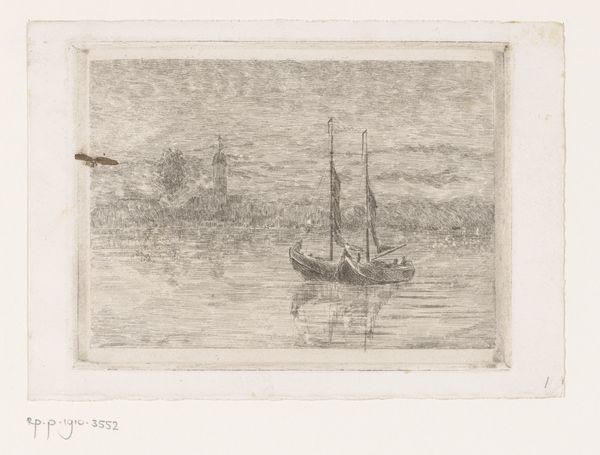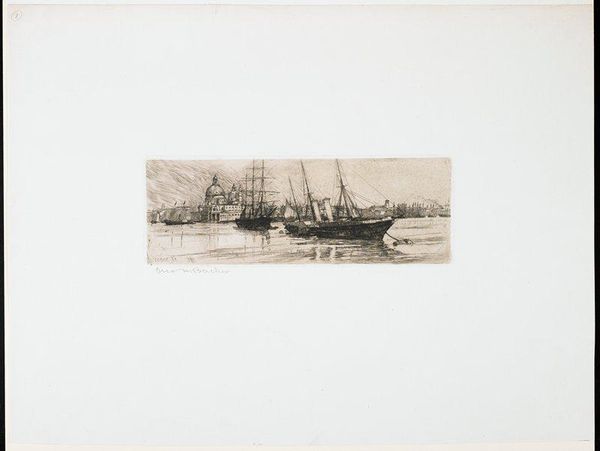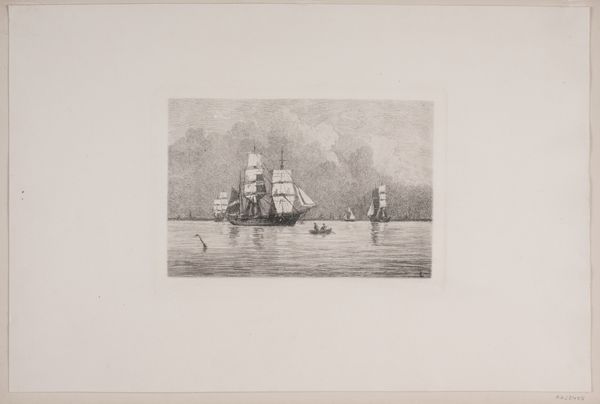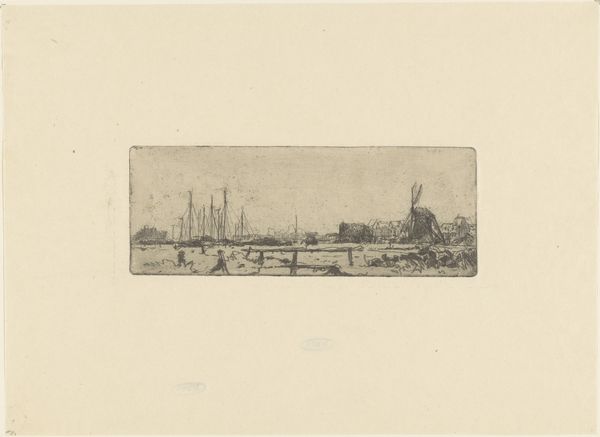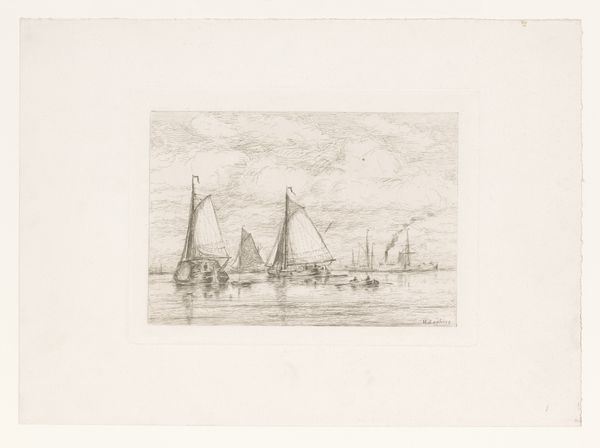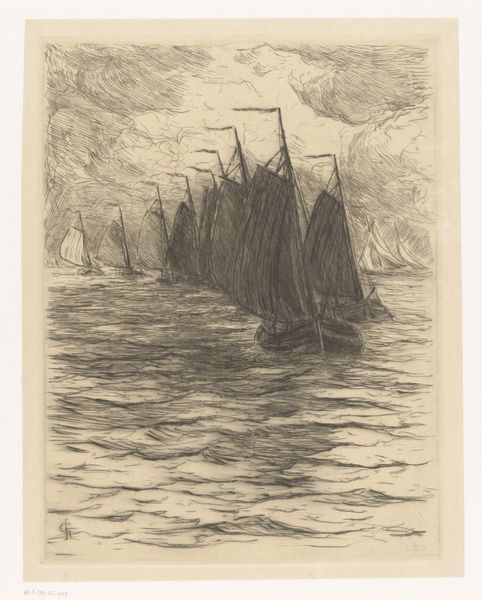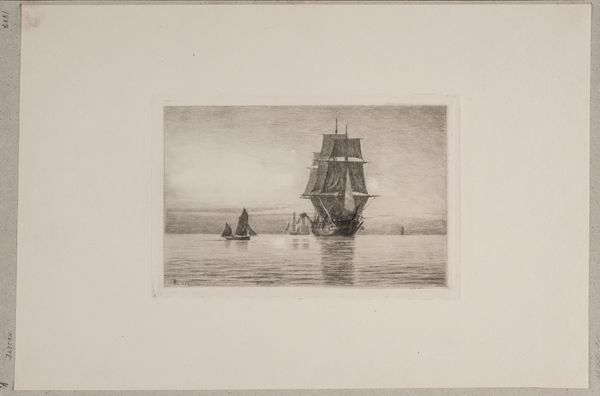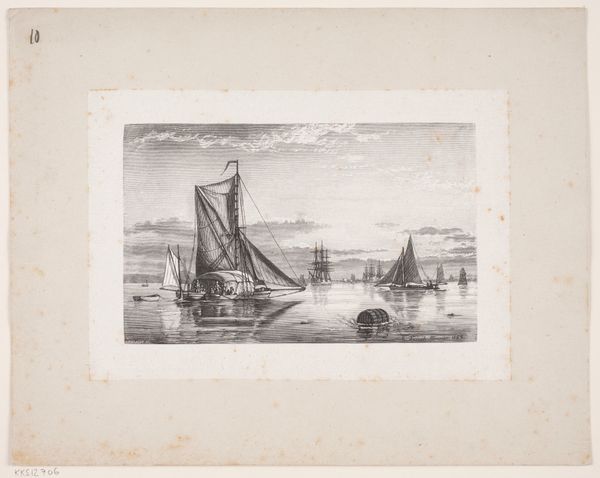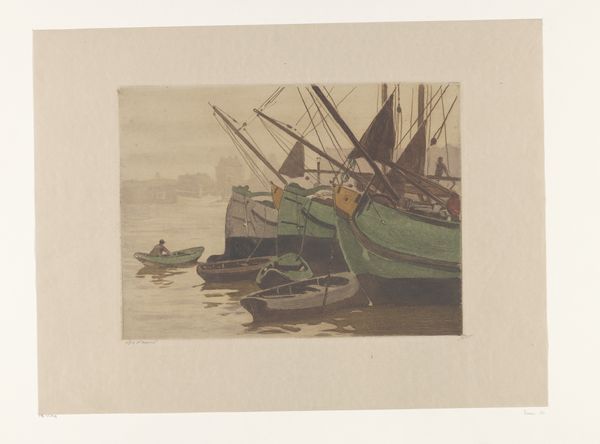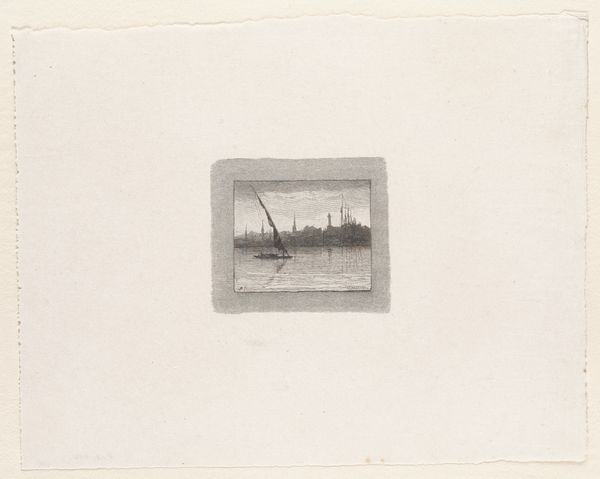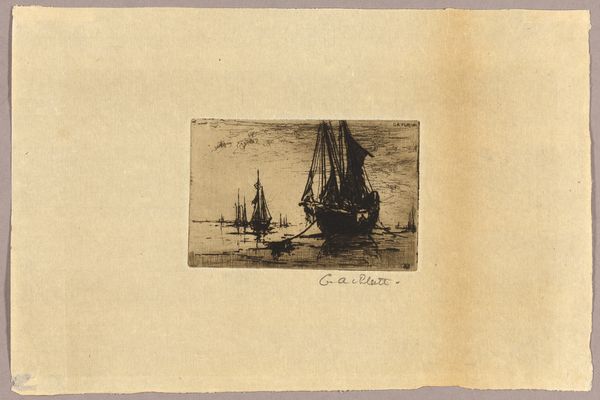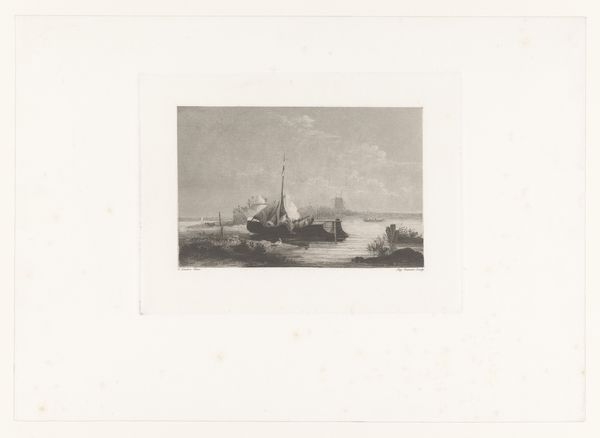
Fishing Fleet, from the seventh album of L'Estampe originale Possibly 1893 - 1894
0:00
0:00
Dimensions: 225 × 284 mm (plate); 238 × 317 mm (primary support); 498 × 571 mm (secondary support)
Copyright: Public Domain
Curator: What a beautifully evocative etching. This is Theo van Rysselberghe’s "Fishing Fleet, from the seventh album of L'Estampe originale," likely created between 1893 and 1894. The delicate lines depict a harbor filled with fishing boats. Editor: My first impression is one of stillness. The muted tones and the reflective water create a serene, almost melancholic mood. There's a quiet anticipation in the air. Curator: Precisely. Note the composition. Rysselberghe masterfully uses horizontal and vertical lines to create a sense of order and calm. The masts of the boats form a series of verticals, mirrored by their reflections, while the shoreline and the small piling in the foreground ground the scene horizontally. Editor: I see the visual balance, but I am also considering the lives tied to these vessels. Fishing was, and remains, a grueling and often precarious occupation. This seemingly placid harbor is actually a site of labor, risk, and community. The industrial revolution changed this traditional labor for people as they left small rural coastal towns in search of bigger opportunity. Curator: An important point. And yet, within the work itself, we see an exercise in formal relationships. The texture created by the etching technique gives a rich density to the water and hulls of the boats, drawing the viewer into the minute details of form. It demonstrates his pointillist influences that we see throughout his career. Editor: Yes, but what was Rysselberghe trying to convey about these lives and about society in general? Where did he see these figures positioned in relation to the booming urban developments throughout Europe? We have to consider who benefits when such subjects are aesthetically consumed within the elite circles of art collection. Curator: Those are questions beyond the visual language present within the etching, but worth pursuing independently. I am drawn to the harmony and stillness within a beautifully crafted work. Editor: Perhaps its greatest strength lies in its ability to serve as a conduit, channeling discussions that both affirm and critically reassess established narratives.
Comments
No comments
Be the first to comment and join the conversation on the ultimate creative platform.
